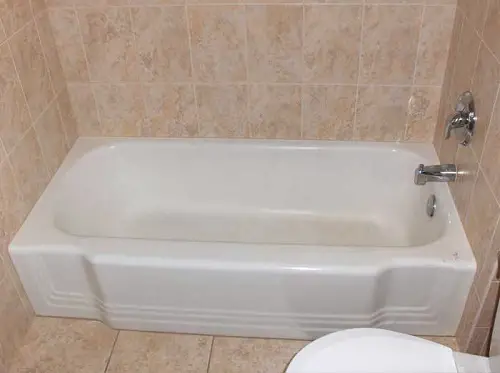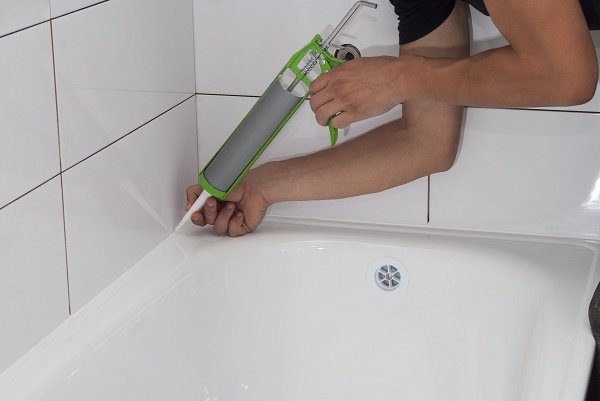How Much Does It Cost to Caulk a Bathtub? A Comprehensive Guide
Caulking a bathtub is a simple yet essential maintenance task that can significantly impact the overall appearance and functionality of your bathroom. A properly caulked bathtub helps prevent water leaks, mold growth, and damage to surrounding walls and floors. However, many homeowners often wonder about the cost of caulking a bathtub and whether it’s worth hiring a professional for the job. In this post, we’ll delve into the factors affecting the cost of bathtub caulking, explore different caulk materials, and provide step-by-step instructions for both DIY and professional caulking methods.
Understanding Bathtub Caulking

Before diving into the cost details, let’s first understand what bathtub caulking is and why it’s essential. Bathtub caulking is the process of sealing the joint between the bathtub and the surrounding wall or floor to prevent water infiltration and maintain a watertight seal. Over time, the existing caulk may deteriorate, crack, or become discolored, requiring recaulking to maintain a proper seal.
Factors Affecting the Cost
The cost of caulking a bathtub can vary based on several factors, including:
1. Caulk Material: The type and quality of caulk used can significantly impact the cost. There are various caulk materials available, such as silicone, acrylic, latex, and hybrid caulks, each with different price points.
2. Bathtub Size and Condition: Larger bathtubs or those with intricate designs may require more caulk and time for application, affecting the overall cost. Additionally, the condition of the existing caulk and any repairs needed can influence the price.
3. Labor Costs: Hiring a professional for caulking will incur labor charges, which can vary depending on the region and the complexity of the job.
4. DIY vs. Professional Caulking: DIY caulking is generally more cost-effective, as it only requires purchasing caulk and a caulking gun. Professional caulking services may include additional costs for labor and materials.
5. Caulking Preparation: If the old caulk needs to be removed before recaulking, additional time and effort will be required, potentially impacting the cost.
Different Caulk Materials
Understanding the different types of caulk materials can help you make an informed decision on which one suits your needs and budget:
- Silicone Caulk: Durable and water-resistant, silicone caulk is a popular choice for bathtubs. It offers excellent adhesion, flexibility, and resistance to mold and mildew. However, it is typically more expensive than other caulk types.
- Acrylic Caulk: Acrylic caulk is an affordable option that is easy to apply and clean up. While it provides good adhesion, it may not be as water-resistant as silicone.
- Latex Caulk: Latex caulk is suitable for small repairs and less demanding applications. It is budget-friendly but may not be as durable as silicone or acrylic caulk.
- Hybrid Caulk: Hybrid caulks combine the best features of silicone and acrylic caulks. They offer good adhesion, flexibility, and durability, making them a reliable choice for bathtub caulking.
DIY Bathtub Caulking
If you prefer a cost-effective approach, caulking your bathtub yourself can be a rewarding DIY project. Here’s a step-by-step guide:
Materials Needed:
- Caulk gun
- Caulk remover tool or utility knife
- Caulk (silicone, acrylic, or hybrid)
- Caulk smoothing tool or wet finger
- Painter’s tape (optional)
Steps:
- Prepare the Bathtub: Clean the bathtub thoroughly to remove any dirt, soap residue, or existing caulk. Use a caulk remover tool or utility knife to scrape off old caulk.
- Mask the Edges (Optional): For cleaner lines, you can apply painter’s tape along the edges of the joint before caulking.
- Load the Caulk Gun: Insert the caulk tube into the caulk gun and cut the nozzle at a 45-degree angle.
- Apply the Caulk: Slowly squeeze the caulk gun trigger to apply a smooth and even bead of caulk along the joint between the bathtub and the wall or floor.
- Smooth the Caulk: Use a caulk smoothing tool or your wet finger to smooth the caulk and create a neat finish.
- Remove Excess Caulk (Optional): If you didn’t use painter’s tape, you can remove any excess caulk with a damp cloth or sponge.
- Allow the Caulk to Dry: Follow the manufacturer’s instructions for drying time, and avoid using the bathtub until the caulk has fully cured.
Professional Bathtub Caulking
For those seeking a flawless finish and optimal longevity, hiring a professional caulking service is the way to go. A professional caulker will have the experience, tools, and expertise to deliver a high-quality result. They will carefully remove the old caulk, prepare the surface, and apply the appropriate caulk material for a watertight seal.
What Does It Mean When Sewage Backs Up In Bathtub
Average Cost of Bathtub Caulking
The cost of bathtub caulking can vary based on the factors mentioned earlier. On average, DIY caulking materials can range from $10 to $30, depending on the type of caulk used. Professional caulking services may cost between $150 and $300, depending on the region and the complexity of the job.
How much does caulk for a bathtub cost?
The cost of caulk for a bathtub can vary depending on the type and quality of caulk chosen. On average, a tube of caulk can range from $5 to $15. Silicone caulk, known for its durability and water resistance, is generally more expensive than acrylic or latex caulk.
Can I caulk my bathtub myself to save money?
Yes, caulking your bathtub yourself can save money compared to hiring a professional caulking service. DIY caulking materials, including the caulk tube and caulking gun, can be purchased at a reasonable cost. With proper preparation and technique, DIY caulking can yield satisfactory results.
How often should I recaulk my bathtub?
The frequency of recaulking your bathtub depends on the quality of the initial caulk and the level of use and wear. On average, it is recommended to recaulk your bathtub every 5 to 10 years. However, if you notice signs of caulk deterioration, such as cracking, peeling, or water leaks, it’s best to recaulk as soon as possible.
Should I remove the old caulk before applying new caulk?
Yes, it is essential to remove the old caulk before applying the new caulk. Old caulk can harbor mold, mildew, and dirt, affecting the adhesion of the new caulk. Use a caulk remover tool or utility knife to carefully remove the old caulk, ensuring a clean and smooth surface for the new application.
Why should I hire a professional caulker?
Hiring a professional caulker can ensure a flawless and long-lasting caulking job. Professionals have the expertise and experience to prepare the surface properly, choose the right caulk material, and apply the caulk evenly and neatly. They can also handle more complex caulking situations and provide a professional finish.
Can I use the bathtub immediately after caulking?
The drying time for caulk can vary depending on the type of caulk and environmental conditions. It is essential to follow the manufacturer’s instructions for drying time. In general, it’s best to avoid using the bathtub for at least 24 hours to allow the caulk to fully cure and achieve its maximum performance.
How can I prolong the life of bathtub caulking?
To prolong the life of bathtub caulking, practice regular cleaning and maintenance. Avoid using harsh chemicals or abrasive cleaners that can degrade the caulk. Keep the area dry to prevent mold and mildew growth. Additionally, avoid using the bathtub excessively for a few days after caulking to allow the caulk to set properly.
Can I use caulk to fix a leaky bathtub?
Caulk can be used to seal gaps and joints in the bathtub and prevent water leakage. However, if the leak is significant or caused by more severe plumbing issues, caulk alone may not be sufficient. In such cases, it’s best to consult a professional plumber to assess and address the underlying cause of the leak.
Can I use colored caulk for my bathtub?
Yes, colored caulk is available in various shades to match different bathtub and bathroom aesthetics. Colored caulk can provide a seamless and aesthetically pleasing finish, especially for visible areas. However, make sure to choose a caulk that is specifically designed for use in wet areas like bathrooms and bathtubs.
Can I apply caulk over existing caulk?
In some cases, applying caulk over existing caulk can be acceptable if the old caulk is in good condition. However, it’s generally recommended to remove the old caulk completely for the best adhesion and performance of the new caulk. Applying caulk over old, deteriorating caulk may not provide a long-lasting solution.
Remember, proper caulking is crucial to maintaining the integrity of your bathtub and preventing water damage. If you’re uncertain about the caulk application process or encounter any issues, don’t hesitate to seek professional assistance. A well-done caulking job can enhance the appearance of your bathroom and ensure a watertight seal for years to come.
Conclusion
Caulking a bathtub is an essential maintenance task that ensures the longevity of your bathroom and prevents water damage. Whether you choose to tackle it as a rewarding DIY project or opt for the expertise of a professional, a well-caulked bathtub will provide peace of mind and a beautiful finish.

